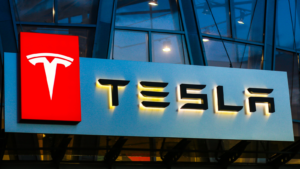
Electric vehicle (EV) stocks have the potential to deliver strong gains for investors as the transition to electric vehicles accelerates. Despite impressive gains already experienced by many EV stocks, the growth opportunity remains massive, driven by government policies, incentives, and concerns over climate change.
However, not all EV stocks are equal, and some may be better positioned to surge ahead of competitors or become multi-baggers. These companies are leveraging their first-mover advantages, innovative tech, and solid growth prospects to capitalize on the rapidly growing demand for EVs.
As the broader indices like the S&P 500 and Nasdaq take off as part of a bull market, EV stocks could stand to benefit more than companies in other industries. Investors of all risk tolerances and time horizons should consider the EV stocks discussed in this article, which have been thoroughly analyzed and deemed to have the best shot at delivering substantial returns.
So here are the three best EV stocks for investors to consider.
Tesla (TSLA)

Tesla (NASDAQ:TSLA) aims to increase vehicle deliveries by 50% in 2024. This is part of its long-term goal of achieving 20 million vehicle sales annually by 2030. The company plans to enhance its production capacity by expanding existing factories and building new ones. Notable expansions include the Texas and Berlin Gigafactories.
TSLA is focusing on advancing its Full Self-Driving (FSD) technology. The company plans to make its FSD software widely available by late 2024. TSLA is also emphasizing energy products, with expectations to grow its energy storage deployments by 100% in 2024.
The consensus analyst rating for TSLA is ‘hold’ The average price target is $182, with a potential upside of 3% from the current price.
I think that TLSA will retain its leadership position in the U.S. thanks to Biden’s tariffs on Chinese EVs, which may give it a significant competitive edge. Consumers who prefer American-made EVs could still gravitate towards TSLA.
Nio (NIO)

Nio (NYSE:NIO) is a prominent Chinese EV manufacturer, known for its premium electric vehicles and battery-swapping technology.
For Q2 2024, NIO expects vehicle deliveries between 54,000 and 56,000 units, an increase of approximately 129.6% to 138.1% year-over-year. Revenue is projected between 16,587 RMB million ($2,297 million) and 17,135 million RMB ($2,373 million), representing an 89.1% to 95.3% increase YOY.
Meanwhile, In April 2024, NIO launched the 2024 ET7 Executive Edition, targeting business professionals with 180 upgrades. The new ONVO brand, introduced in May 2024, aims to penetrate the mainstream market. NIO also emphasizes improving its power and service network, forming strategic partnerships with seven automakers in China to standardize and adopt battery-swapping technologies.
Analysts have mixed views on NIO’s future. Despite recent losses, projections indicate profitability by 2026 or 2027.
I believe that NIO will continue to be a strong performer in its home turf of China, as well as in neighboring countries in East Asia, which has shown considerable growth. This make it one of those EV stocks to buy.
BYD (BYDDF)

BYD (OTCMKTS:BYDDF) is another Chinese EV giant, known for its wide range of electric vehicles and significant market presence.
The company plans to expand its global footprint by entering new markets, including Europe and Japan. The company aims to increase its annual production capacity to 3 million units by the end of 2024. BYD also plans to enhance its battery technology and increase the production of its blade batteries, which offer improved safety and efficiency.
For 2024, BYD projects a sales target of 4 million units for 2024. The company also expects to maintain its dominant position in the Chinese EV market while growing its international presence. BYD is also investing heavily in research and development to maintain its competitive edge in battery technology and autonomous driving systems.
Analysts have a consensus rating of “moderate buy” for BYDDF. The average price target is $33, suggesting a substantial upside.
On the date of publication, Matthew Farley did not have (either directly or indirectly) any positions in the securities mentioned in this article. The opinions expressed are those of the writer, subject to the InvestorPlace.com Publishing Guidelines.






